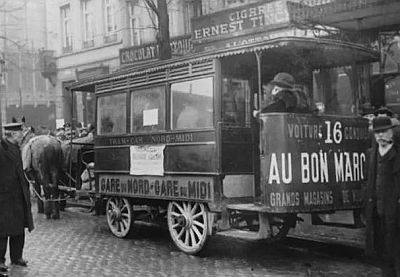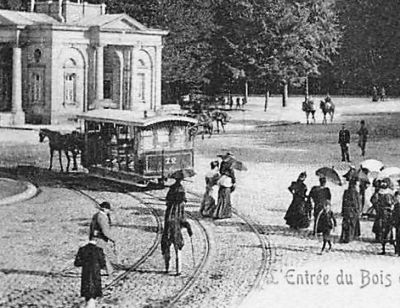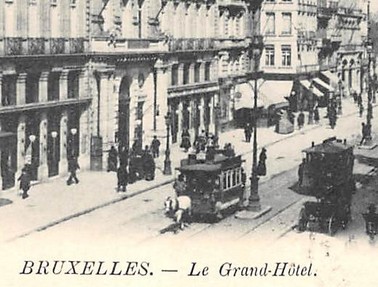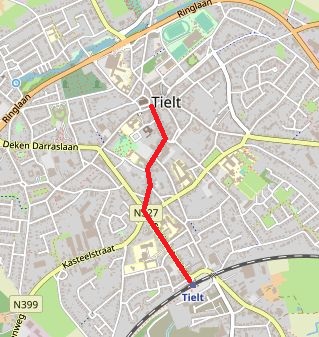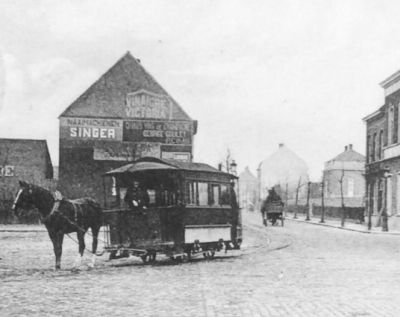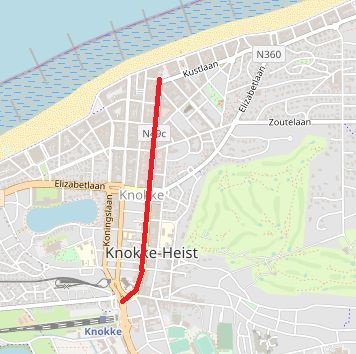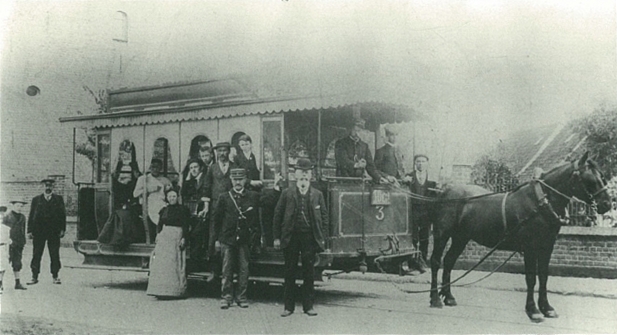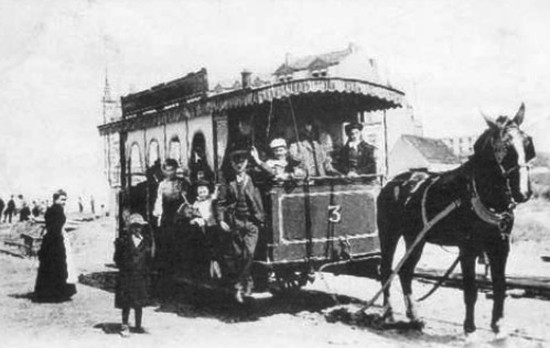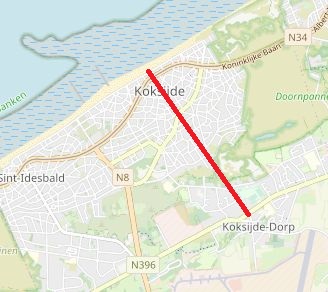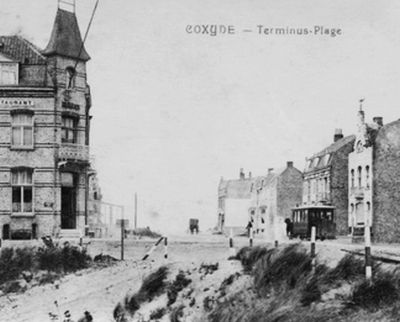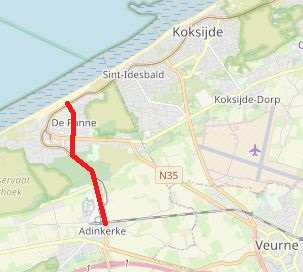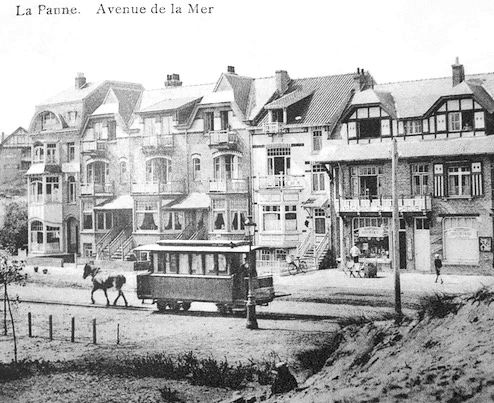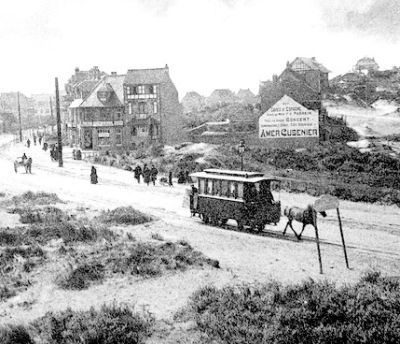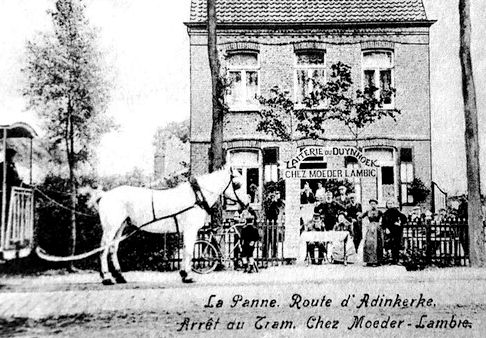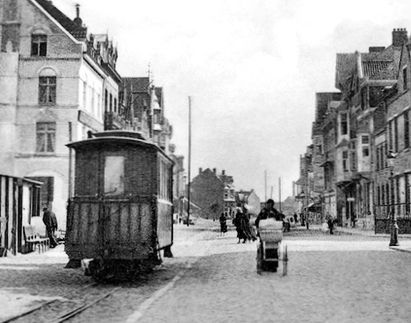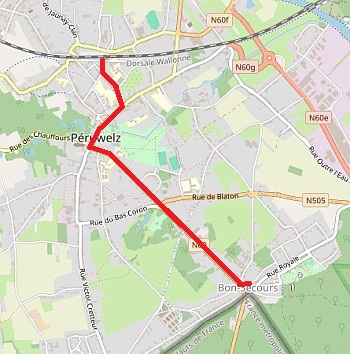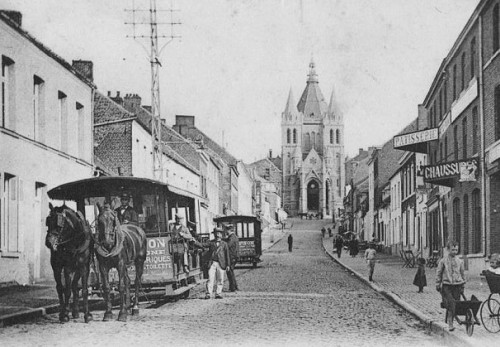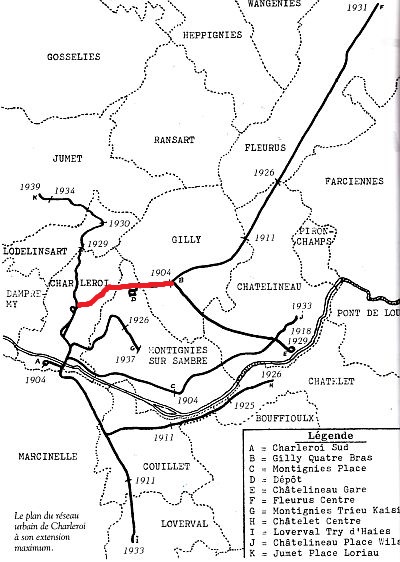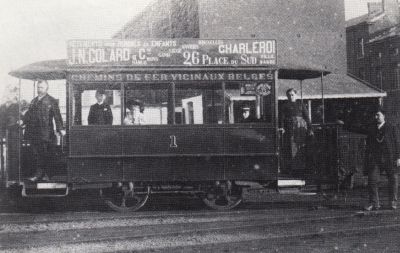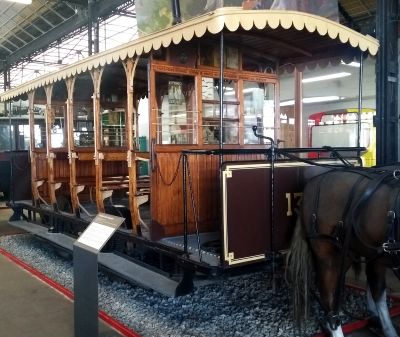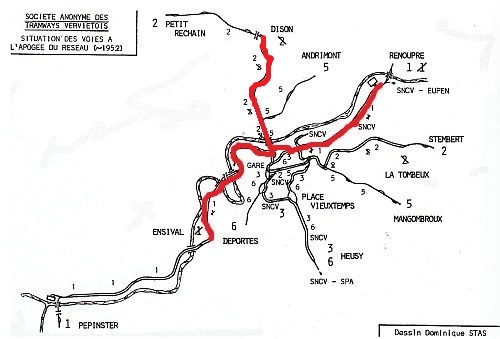Horse trams in Belgium
There have been horse tramways in several cities in Belgium. Below you can find more information about each horse tramway:
Horse tramway : Antwerpen
Introduction
Antwerpen is a big city in the north of Belgium. Todays the city has about 530.000 inhabitants. Around 1880 there were onlys 170.000 inhabitants (although the area of the city was smaller than today).
Maps
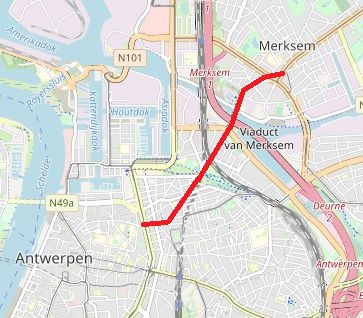
Line paardentram TNA (Paardenmarkt - Merksem Oude Bareel)
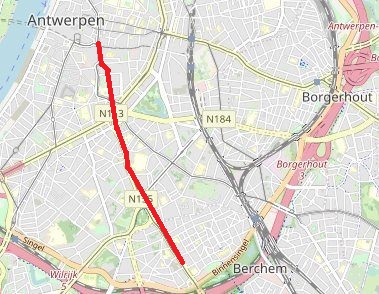
Line paardentram Meir - Berchem
Lines
Around the year 1900 in Antwerpen there were 9 horse tram companies active in the city.
Line Meir - Berchem
The first line was opened on 1873-05-25 leading from the Meir to the village of Berchem. Later on more horse tram lines were opened in Antwerpen. In 1900 all lines were taken over by the CGTA (Compagnie Générale des tramways d Anvers) with the purpose to electrify the horse tram lines. In 1902 all lines were elektrified.
Line Meir - Berchem
On 1879-07-20 the TNA (Tramways du Nord d Anvers) opened a horse tram line from Antwerpen Paardenmarkt to Merksem Oude Bareel. The track width was 1500 mm. In 1887 the line was taken over by the NMVB, which changed the trackwidth to the in Antwerpen usual trackwidth of 1067 mm. On 1908-09-09 the line was electrified and the horse tram stopped.
Rolling stock
On the line of the TNA from Antwerpen Paardenmarkt to Merksem Oude Bareel, a total number of 22 horse tram carriages have been present:
- Series D1 - D10. Closed tram carriages with 3 windows. The letter D was meant to distinguish the broad gauge rolling stock of the TNA. After they have been taken over by the NMVB, the numbers remained the same.
- Series D11 - D12. Closed tram carriages. The length was 6,2 meters.
- Series D101 - D110. Open tram carriages with 6 benches.
Fotos
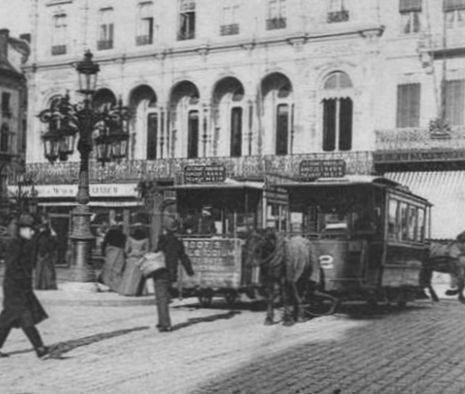 foto: the horse tram on the Meir.
foto: the horse tram on the Meir.
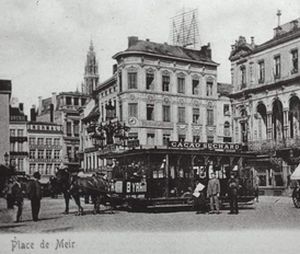 foto: the horse tram on the Meir.
foto: the horse tram on the Meir.
More information
More information of the horse tramways in Antwerpen can be found:
[ to top of page ]
Lines
In Gent the first horse tram was opened in 1874, a line from the station to the center of the city at the Korenmarkt. Later on some more horse trams were opend. The lines were laid with track width 1000 mm, like many other tramways in Belgium. The lines were operated by the "Tramways de ville de Gand", a local company.
On 1897-08-13 the concession for the tram lines was given to two companies linked to the RELSE (company in Liège). They created a new company, the ETG (Elektrische Tramwegen van Gent). That company started replacing the horse tram lines to electric trams (accu trams).
To read more about the electric trams in Gent, visit my page about the city tram in Gent.
Lines
There were no particular horse tram lines in the city. But as the connection from the railway station to the Market in Tielt was not suitable to be run with steam traction (a length of only 1,2 km), a separate service with horse trams was started over the lines of the NMVB. It can be seen as a prolongation of the steam tram line from Aalter to Tielt. By means of the horse tram, it could be avoided to let the steam trams in the center of the city of Tielt.
The line was opened on 1999-07-17. It was stopped on 1914-09-13 with the outbreak of World War II. It was operated by the RELSE, the company that also operated other lines of the NMVB around Tielt.
Lines
From 1904-04-02 on there was a horse tram line from theat the M.Lippensplein (near the railway station) to the Van Bunnenplein (at the beach). It was in exploitation by the "Société anonyme du Tramway de Knocke sur Mer". The owner of this company was Louis Herreboudt, manager of a hotel in Knokke. The length of the line was 1,7 km.
In 1890 the steam tram reached Knokke, but that did not change the horse tram. But when in 1912 the line was elektrified, then the horse tram was replaced by an electric tram.
Introduction
Péruwelz is situated near the French border in the western part of the province of Henegouwen. The railway station is situated north of the town, a church, place of pilgrimage is situated 2 km south of the city, just at the French border.
In 1880 a horse tramway was created to connect the church with the railway station. Track width was the not often used width of 1440 mm. The line remained until the first world war. In that war the German occupiers used the horses for another line. In that time some trials were made with a steam tram, but this did not succeed. After the First World War the tram was no more active.
Lines
But there was another company, the "Soc.des Chemins de fer Vicinaux Belges" (not to be confused with the great NMVB company). This company opened end september 1881 a line from Charleroi-Sud via the city center, via Porte de Waterloo to Gilly Quatre-Bras. This line also was laid with track width 1435 mm. The part from the Sud railway station to Waterloo was running with small steam locs. In Waterloo the steam locs were discoupled and a horst came before the tram for the second part of the ride to Gilly.
The same company opened a second line on 19 March 1882 from the railway station to Montignies. This line was run with steam traction.
Around 1900 the great NMVB, which had lines in the west of the city, made the conversion to electric trams. The city of Charleroi wanted also to change the steam and horse powered lines in the east of the city to electric running. A new consession was given to the RELSE (s.a. des Railways Economiques de Liège-Seraing et Extensions), the company that ran tram lines in the surroundings of the city of Liège. A sub-company was created the TEPCE (s.a. des Tramways Electriques du Pays de Charleroi et Extensions). The two existing lines were transferred from normal gauge to meter gauge and electrified. The line to Gilly was opened on 4 july 1904, and that was the end of the horse tram in Charleroi.
 Line paardentram TNA (Paardenmarkt - Merksem Oude Bareel)
Line paardentram TNA (Paardenmarkt - Merksem Oude Bareel)
 Line paardentram Meir - Berchem
Line paardentram Meir - Berchem


